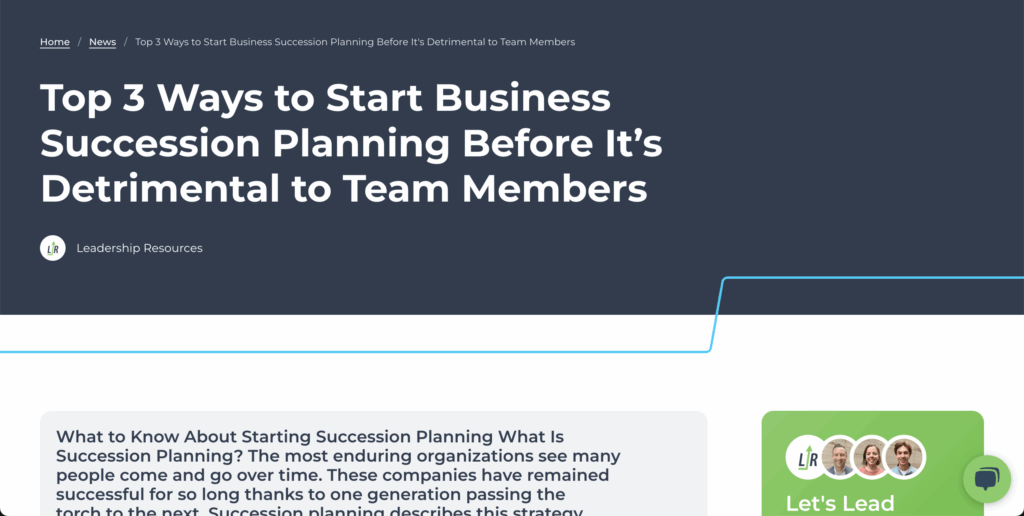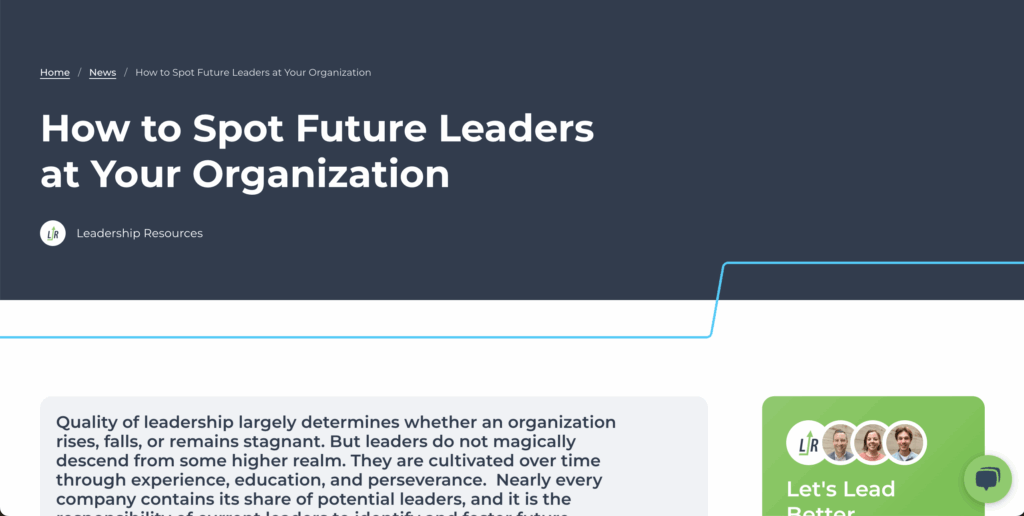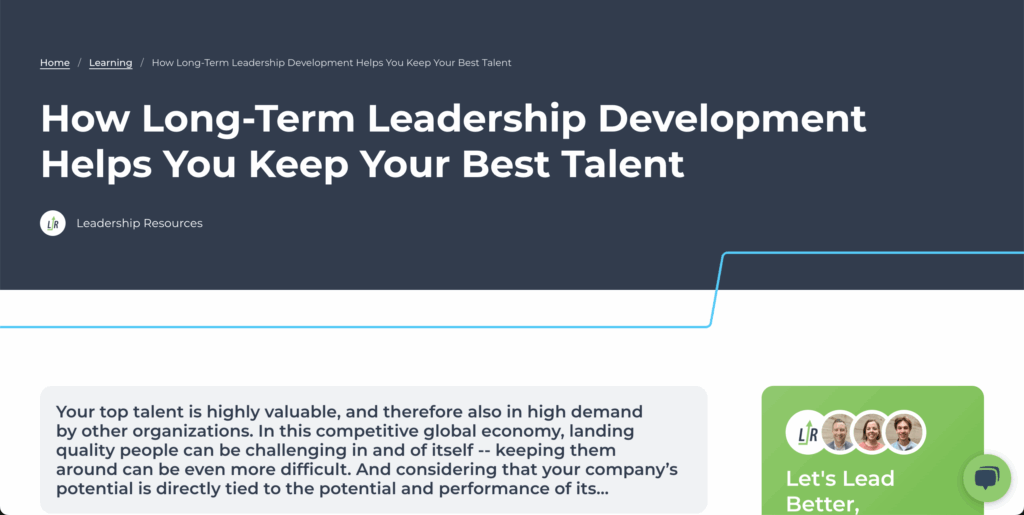How to Identify the Right Leaders for Succession Planning
If you’re like most CEOs, COOs, or HR leaders, you already know the stakes: when a key leader leaves unexpectedly, or retires, you can’t afford a leadership gap. The disruption can stall growth, derail strategic initiatives, and leave your team scrambling to fill a role that’s far more complex than it seems on paper.
Succession planning isn’t just about replacing people. It’s about protecting your organization’s future. But here’s the real challenge: not every role needs a succession plan. So how do you know which positions deserve your focus?

Know you need Succession Planning ASAP?
Read our blog “Top 3 Ways to Start Business Succession Planning Before It’s Detrimental to Team Members” if you know you need Succession Planning ASAP but have no idea where to start!
Start by Zeroing in on Critical Roles
The most effective succession plans begin by targeting positions that are:
- Essential to business operations – Roles that, if vacant, would immediately disrupt how your company runs.
- Key drivers of strategic initiatives – Positions directly responsible for executing long-term growth plans.
- Holders of unique knowledge – Leaders who understand your business and industry in ways that aren’t easy to replicate.
- Specialized expertise – Talent that’s hard to find or train from the external market.
It’s also wise to flag roles with high turnover potential (whether due to burnout, market competition, or retirement). These are the positions that could leave you vulnerable if you don’t prepare now.

Need more help finding those critical roles?
Read “How to Spot Future Leaders at Your Organization” and learn how to spot your leaders so you can develop them for future success.
The Quick Role Assessment
To help you identify which positions should be your top priority, ask these six questions about each role in your organization:
- Strategic Impact: How critical is this role to achieving your organization’s big-picture goals?
- Operational Independence: If this role went vacant, how significantly would day-to-day operations be affected?
- Difficulty to Fill: How hard would it be to find or train a qualified replacement?
- Turnover Risk: Is there a high chance this position will become vacant soon (retirement, resignation, promotion)?
- Onboarding Duration: How long would it take for a new hire to deliver real value in this position?
- Future Relevance: Will this role remain vital as your organization evolves over the next 3-5 years?
Rate each question on a 1-5 scale, then total the scores:
- 24-30: High Priority – Needs an immediate succession plan.
- 18-24: Medium Priority – Should be on your radar.
- 12-18: Low Priority – Worth monitoring.
- Below 12: Minimal Priority – Consider reevaluating this role entirely.
Why This Matters Now
Succession planning isn’t a “someday” project. It’s a proactive strategy to safeguard growth and stability, especially during leadership transitions. Companies that fail to plan often find themselves reacting to crises, spending more on rushed hires, and losing momentum at the worst possible times. Traditional models often focus too narrowly on replacement rather than readiness. As Harvard Business Review notes, many organizations fall short because they fail to plan for evolving leadership needs. Read the article
Don’t let your organization fall into that trap. Use this assessment to identify your most vulnerable leadership positions and start building the bench strength you’ll need for the future.

You found your critical roles. Now what?
Read “How Long-Term Leadership Development Helps You Keep Your Best Talent” to learn how effective Leadership Develop is key to keeping your critical team players!
Watch our FREE Masterclass for a deeper dive on identifying the right leaders for Succession Planning.






